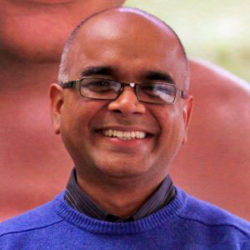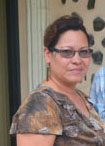The Ministry of Indigenous Peoples’ Affairs yesterday launched the Sustainable Development Agreement Framework (SDAF) for Amerindian villages.
In 2015, the UN General Assembly agreed on 17 Sustainable Development Goals (SDG), which followed the Millennium Development Goals, setting global targets up to the year 2030.
With the SDG as a guide, the framework, communities will design and implement projects that are linked to the achievement of the key goals in their communities. Additionally, villages will be required to produce a 10-year Community Development Plan (CDP), where programmatic areas will be outlined, projects and targets prioritized based on the respective CDP’s and an effective feedback mechanism employed.
Once that aspect is completed, an annual village plan will be produced as stipulated in the Amerindian Act of 2006, and submitted to both the Ministry and the Regional Executive Officer (REO) of each region by May of each year. This would allow both the Ministry and the Region to include in their budget proposal, allocations for the projects submitted. When approved by the National Assembly, the Ministry will then begin processing project documentation for the respective village councils for the sums approved.


Programme Coordinator at the Ministry, Jude Da Silva, explained that over time, it has become evident that indigenous communities have faced difficulties in submitting annual community plans to the Ministry, as well as difficulties in sustainable planning for their community’s development.
“We get a lot of project proposals at the Ministry, but most of them are weak and do not have the sustainable enhancing element attached to it,” Da Silva said, as she highlighted other issues which speak to poor coordination in the communities.
With this in mind, the SDAF was birthed and is currently being implemented with the help of Conservation International-Guyana (CIG) which has played similar roles with the development of the Kanuku Mountain Community Regional Group, as well as the North Rupununi District Development Board.
Similar sentiments were shared by Minister of Indigenous Peoples’ Affairs Sydney Allicock, who believes that the SDAF will be a policy that ensures effective and efficient financial and technical support is directed to the indigenous villages for social, economic and cultural development.
“It is important to note that while it a stipulation of the Amerindian Act, for villages to provide the Ministry and REO with an annual village plan, this has not been forthcoming…. We have observed that while some projects are done well, many have failed over the years due to several factors,” he said.
Factors listed were a lack of accountability and transparency at village level, poor planning and coordination within the villages, conflict within the villages, poor support and lack of commitment for project, Toshao changes and no succession plan among others.
He said the Ministry came to the realization that such communities are in need of assistance and technical guidance. And as such, the SDAF was established as a means of alleviating and rectifying, if not all, most of the shortcomings.
“Our wish is to have the indigenous villages have the framework in place, so that they will be able to plan effectively for the development of their villages,” he said.
Interpret
Meanwhile, Executive Director of CIG, Dr. David Singh, in brief remarks lauded the Ministry for undertaking such a commitment while pointing out that the SDAF was built around the UN SDGs.
This he said, seeks to interpret and adapt to targets set by the goals that communities can easily own, participate and assist the State in achieving.
“For Guyana particularly, there are very few countries with characteristics and commitment like ours; from the vastness of its intact ecosystems and biodiversity located in the heart of the Guiana Shield, we can demonstrate at scale the unique relationship between growing an economy and (managing) natural capital,” he said.
Singh also moved to highlight the emphasis that is placed on local decision making processes, which he views as government’s commitment to the decentralization of the decision making, thus enabling community ownership.
This, would ultimately lead to greater control of community lives, the strengthening of communities and families as well as helping to secure natural capital, while at the same time contribute strongly to National economic development.
The Director noted that the framework would also promote the improvement in the efficiency of services delivered within indigenous communities and ensuring that investments are informative in nature while at the same time respecting the culture and traditions of the indigenous people.
“We at Conservational Inter-national are particularly pleased to be associated with this initiative from a number of perspectives… we are committed to working with Vice President Sydney, Minister Valerie (Garido-Lowe) as well as the forward looking staff we would have had the pleasure of interacting with over the past months,” Singh posited.
Chairman of the National Toshaos Council (NTC), Toshao Joel Fredricks also took the opportunity to share his views on the established framework and chose to describe it as the way forward for community involvement; one that has been fully embraced by the NTC, as it allows the minds of the villagers, both young and old, to contribute, to make a difference within their communities.
Over the weekend, twenty-seven Indigenous Villages in Region Nine were outfitted with the said framework during a visit to the region by a team from the Ministry of Indigenous Peoples’ Affairs.
The meetings were held in Annai and Lethem, at which both Regional Chairman Brian Allicock and NTC Chairman Fredericks were present, along with representatives of the various Village Councils, the National Toshaos Council, Community Development Officers, the World Wildlife Fund (WWF) and Conservation International-Guyana.
It was further noted that the WWF is currently working on a project that involves community development in twenty villages in the North Rupununi.
A similar exercise is scheduled to be conducted in Mainstay/ Whyaka, Region Two, in the near future much to the liking of Toshao Frederick, who is the Toshao of that Region Two community.
“I see the Sustainable Development Plan or Framework is fitting in with what the NTC’s mandate is all about for every village, because in the past villages did projects but it wasn’t really structured like how the plan is catering for it, so I believe it is something good for every village,” he said.
“Leaders come and leaders go, and you might find that a new Toshao coming with a new plan or vision the village can either develop or the rate of development can drop, but when you have the sustainable development plan, a five or ten year plan, you can work with that and it is also good for the village because you don’t have to wait on the Ministry to finance their project[s], they can look to other stakeholders, so I see it is something very good,” he added.





